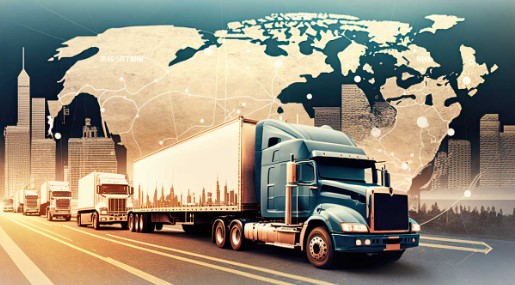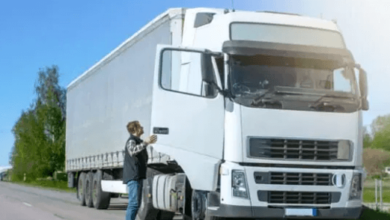Technological Advances in Trucking: How It Affects Truck Driving Jobs

In recent years, the trucking industry has witnessed significant technological advancements that are reshaping operations and impacting the role of truck drivers. These innovations aim to improve efficiency, safety, and sustainability in logistics but also raise questions about the future of truck driving jobs.
Automation and Autonomous Vehicles
One of the most transformative technologies in trucking is automation, including the development of autonomous trucks. These vehicles use advanced sensors, GPS technology, and artificial intelligence to navigate roads and deliver goods without direct human intervention. Companies like Tesla, Waymo, and TuSimple have made substantial strides in testing and deploying autonomous trucks on highways.
While fully autonomous trucks are not yet widely operational due to regulatory and technical challenges, they represent a potential shift in the industry. Autonomous technologies have the potential to increase efficiency by enabling trucks to operate around the clock with reduced downtime for driver rest. However, they also raise concerns about job displacement among truck drivers who may see their roles evolve or become obsolete.
Read also: Trucking 320M 630mheeter Theinformation
Connected Fleet Management
Advances in connectivity have led to the adoption of telematics and Internet of Things (IoT) solutions in trucking. Fleet management systems now utilize real-time data to optimize routes, monitor vehicle performance, and improve fuel efficiency. Telematics devices track driver behavior, vehicle diagnostics, and cargo conditions, enhancing safety and operational efficiency.
While connected technologies improve fleet management and overall logistics, they also necessitate new skills for truck drivers. Today’s drivers may need proficiency in using onboard computers, GPS navigation, and data analysis tools to maximize efficiency and comply with operational protocols.
Electric and Alternative Fuel Vehicles
The push towards sustainability has spurred the development of electric trucks and vehicles powered by alternative fuels such as hydrogen and compressed natural gas (CNG). Electric trucks promise reduced emissions and lower operating costs over time compared to traditional diesel engines. Companies like Nikola Corporation and Rivian are pioneering electric truck prototypes designed for both short-haul and long-haul routes.
The adoption of electric and alternative fuel vehicles introduces new considerations for truck drivers, such as charging infrastructure availability and vehicle range limitations. Training programs may evolve to include instruction on handling and maintaining electric or hybrid trucks, ensuring drivers can adapt to changing technology in the industry.
Impact on Truck Driving Jobs
As technology continues to advance in trucking, the role of truck drivers is evolving rather than disappearing entirely. While automation may reduce the demand for long-haul truck drivers, it also creates new opportunities in areas such as vehicle maintenance, logistics coordination, and remote monitoring of autonomous fleets. Truck drivers with specialized skills in operating and maintaining automated systems may be in higher demand as the industry transitions.
Moreover, the human element remains crucial in trucking operations, especially for tasks requiring decision-making, customer service, and handling unforeseen challenges on the road. Automation complements rather than replaces human drivers, emphasizing the importance of skilled professionals in ensuring safe and efficient freight transportation.
Adapting to Change
As the trucking industry embraces technological advances, stakeholders must prioritize workforce development and training initiatives. Investing in education and upskilling programs can equip current and future truck drivers with the knowledge and skills needed to thrive in a technology-driven environment. Collaboration between industry leaders, educational institutions, and policymakers is essential to support a smooth transition and minimize disruptions in the workforce.
Conclusion
Technological advancements in trucking are revolutionizing operations, enhancing efficiency, and promoting sustainability in freight transportation. While these innovations reshape traditional roles and introduce automation, they also create opportunities for innovation and career growth in the industry. By embracing change and investing in skills development, stakeholders can navigate the evolving landscape of trucking while ensuring a sustainable and resilient workforce.
FAQs
Q1: Will autonomous trucks completely replace human truck drivers? A1: While autonomous technology is advancing, widespread adoption faces regulatory and technical challenges. Human drivers will likely continue to play a critical role in trucking operations for the foreseeable future.
Q2: What skills will be important for truck drivers in a technology-driven industry? A2: Skills in operating advanced vehicle systems, using telematics for route optimization, and adapting to electric or alternative fuel vehicles will be valuable. Communication, problem-solving, and safety awareness remain essential.
Q3: How can truck drivers prepare for the future of automated trucking? A3: Drivers can stay informed about industry trends, participate in training programs for new technologies, and diversify their skills to remain competitive in a changing job market.
Q4: What are the benefits of electric trucks compared to traditional diesel trucks? A4: Electric trucks offer reduced emissions, lower operating costs over time, and potential incentives for sustainable transportation initiatives. They contribute to cleaner air quality and reduced dependence on fossil fuels.
Q5: How is connectivity improving safety in the trucking industry? A5: Telematics and IoT solutions provide real-time data on vehicle performance, driver behavior, and road conditions, allowing fleets to implement proactive safety measures and improve overall operational efficiency.
3.5







